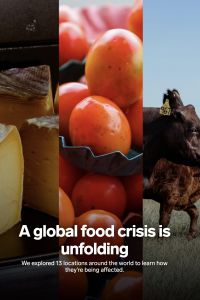Melden Sie sich bei getAbstract an, um die Zusammenfassung zu erhalten.

Melden Sie sich bei getAbstract an, um die Zusammenfassung zu erhalten.
Jeremy Meek, Fati Abubakar, Andri Tambunan, Junya Inagaki, Octavio Jones, Tim Paradis, Morgan McFall-Johnson, Ayelet Sheffrey and Emmanuel Abara Benson
A Global Food Crisis is Unfolding
Business Insider UK, 2022
Was ist drin?
Climate change, the COVID-19 pandemic, and Russia's invasion of Ukraine spurred a global food crisis.
Recommendation
The pandemic, Russia’s invasion of Ukraine and climate change have conspired to create a far-reaching, long-lasting global food crisis, according to a team of Business Insider reporters who investigated conditions in 13 locations worldwide for this daunting, admirable series of reports. In short, they explain the factors that disrupted supply chains and caused shortages in fertilizer, as well as grains and other staples. Climate change also has increased food-system vulnerability, reducing crop yields and affecting livestock and fisheries. Although the global food crisis especially affects developing nations and low-income people everywhere, everyone should be concerned because it could ravage regional economies and cause social unrest.
Summary
About the Authors
Jeremy Meek, Fati Abubakar, Andri Tambunan, Junya Inagaki, Octavio Jones, Tim Paradis, Morgan McFall-Johnson, Ayelet Sheffrey and Emmanuel Abara Benson covered elements of the food crisis in California, Florida, Nigeria, South Africa, the United Kingdom, Spain, Germany, the Netherlands, India, Japan and Singapore for Business Insider.





















Comment on this summary